Clematis "Ernest Markham": variety description and cultivation

Blooming garden crops are presented in a wide variety, among which clematis occupy a special place. These plants are notable for a wide variety assortment. Particularly noteworthy is the Ernest Markham variety, which stands out for its attractiveness and ease of cultivation.
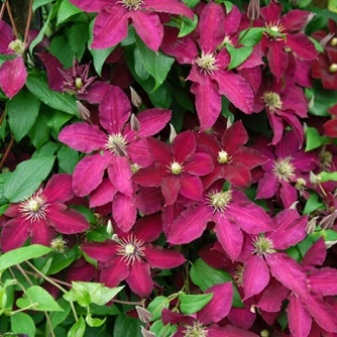
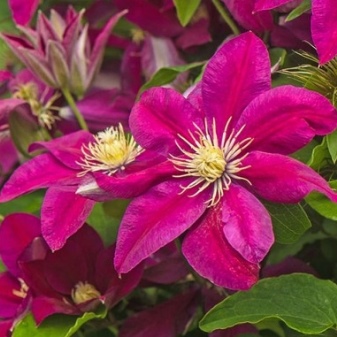
Peculiarities
Blooming lianas have become quite popular in terms of landscape design and decoration of private houses, in light of which clematis from the Jacqueman group, to which the Ernest Markham variety belongs, began to be grown everywhere. The plant was named after its "parent" - the famous breeder E. Markham. Today, the undersized liana actively populates domestic gardens and recreation areas, delighting with its stormy and beautiful flowering.
The culture of this variety is a climbing perennial from the Buttercup family. However, clematis "Ernest Markham" can be grown in the form of an ornamental shrub, which will look no less attractive on the site. The average height of vines is considered to be from 1.5 to 2.5 meters, however, there are specimens whose shoots can elongate up to 3.5 meters during development. Small crops can be successfully cultivated not only in the open field, but also in flower containers.

According to the description, the thickness of the shoots at the flower is 20 mm, while the surface of the branches will be distinguished by ribbing with slight pubescence. The color of the liana is brown-gray. The shoots are notable for their flexibility, due to which they quite quickly braid various supports, intertwine with each other. Thanks to this feature of the branches, the culture can be grown using specially installed or natural supports in the open field.
The green mass of Ernest Markham has an elongated shape with a pointed end. The sheets are about 5-6 centimeters wide. The edge of each leaf is wavy, the color is dominated by dark emerald tones. The green mass is attached to the shoots of the vine with the help of petioles.
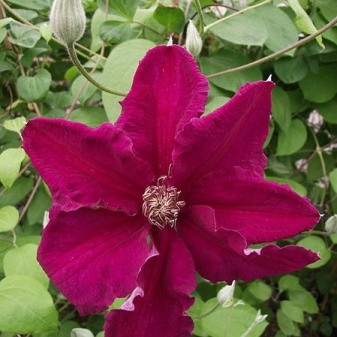
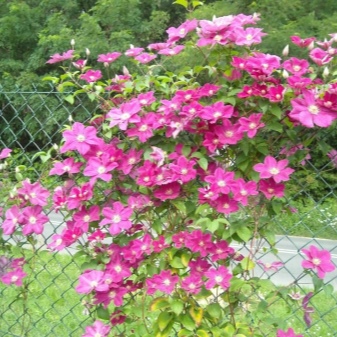
The root system of the plant is represented by a powerful root shaft, also distinguished by its branching, some roots can reach one meter in length.
The main feature that determines the popularity of clematis are flowers. This variety is large-flowered, flowering is quite active, with the appearance of a large number of buds. The flowers are bright red in color. The flowering phase of Ernest Markham falls between June and October. In the open state, the diameter of the buds is about 14-15 centimeters. The flowers themselves consist of 5 or 6 pointed petals with a wavy edge. The surface of the flowers glistens in the sun, the tactile sensations resemble velvet. The flower's stamens are creamy.
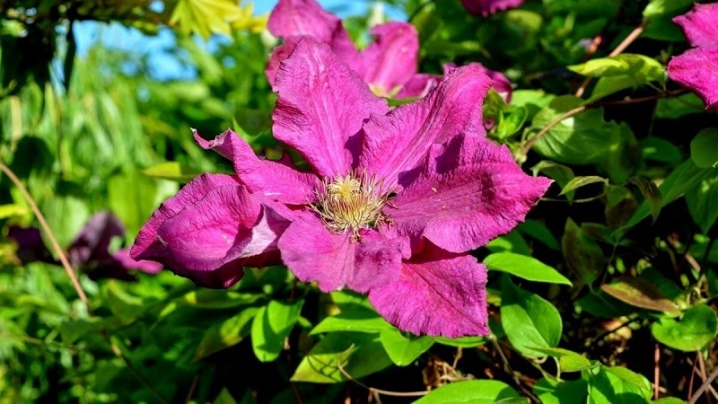
Landing
In order for the culture to have the opportunity to bloom beautifully and for a long time, as well as to develop in the proper volume, the gardener or designer will need to thoroughly approach the choice of a place for planting clematis. The Ernest Markham variety belongs to light-loving crops, so it is best to grow such a crop on the south side. Windy places should be avoided. You can choose areas where diffuse lighting will be present for most of the day. For proper growth and development, the liana will need a day of light lasting at least 5 hours.
The choice of soil deserves special attention. Liana will not be able to grow in soil with high acidity, and problems with growing clematis can also arise in heavy soil.
Such plants are recommended to be cultivated in loose soil with good aeration, due to which the earth will properly conduct moisture without retaining it in the upper layers.
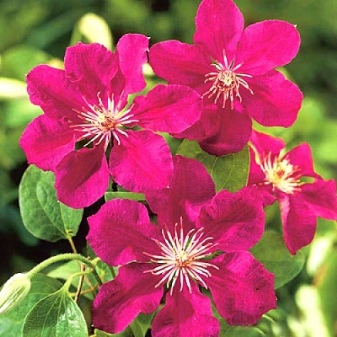

Planting can be carried out with the arrival of spring or at the very beginning of autumn. Simultaneously with the rooting of the culture, the support for the climbing plant is immediately installed. Its optimal height will be 2 meters, which will allow the plant to develop correctly.
Before planting clematis, you need to prepare a flower hole. Its depth should be at least 60 centimeters. The same dimensions should be the width and depth of the clematis hole. Regardless of the soil in which the flower will be grown, drainage should be laid at the bottom of the hole before rooting. After that, the culture is placed in the center of the pit, the root system is straightened and the plant is sprinkled with earth, forming a small mound on the surface.
Among the proposed options for clematis seedlings "Ernest Markham" it is worth giving preference to plants that are at least one year old... Since it is in such crops that the survival rate will be the highest after transplanting a flower into open ground.
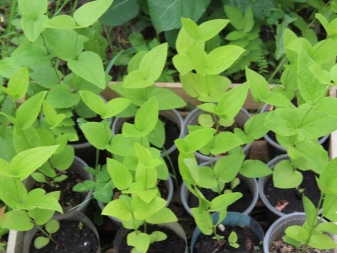
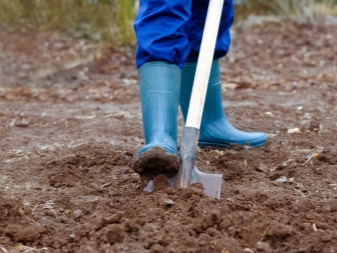
You can purchase planting material with an open or closed root system. In the first case, after removing the culture from the temporary container in which it was sold, it is worth immersing clematis for a while in warm water.
For early adaptation and better development, you can root the vine in a specially prepared soil mixture. Humus, peat and sand will become its components. You can also additionally include lime, superphosphate and wood ash in its composition. It is recommended to take broken brick as a material for drainage. After planting, the soil around the flower must be watered abundantly, and a layer of mulch must be laid out.
In regions with hot summers, some gardeners root short annuals next to clematis, which will help protect the roots of the vine from overheating in the heat.
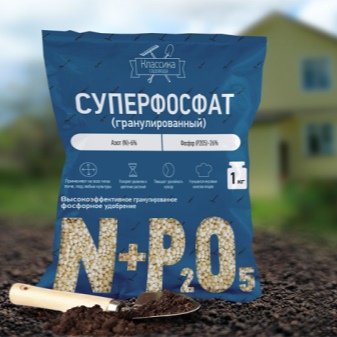
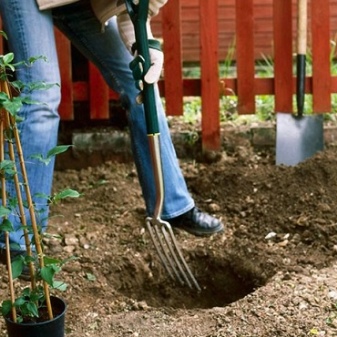
Correct care
Clematis "Ernest Merkham" is an unpretentious crop in terms of cultivation, so even an inexperienced gardener can plant such a blooming vine in the garden. Among the compulsory agrotechnical measures necessary for the development and growth of a flower, it is worth highlighting the following.
Watering
In order for the flower to bloom with beautiful large buds, it will need regular moisture. If the vine grows on the south side, then it is recommended to water it once a day, using at least one bucket of water for one adult plant. However, the amount of injected liquid can be adjusted, avoiding stagnation of moisture in the soil.
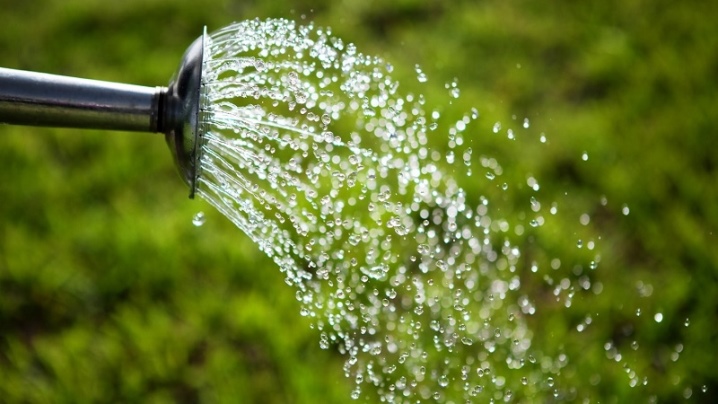
Top dressing
Additional fertilizers should be introduced only after the plant has finally rooted in a new place. Usually, the first feeding is carried out for the 2nd or 3rd season of the life of clematis in the open field. The best time for this event will be spring. During this period, it is necessary to select a fortified complex for the plant, in which nitrogen will be necessarily present.
During the budding period, it is most correct to use mineral fertilizers, phosphorus or potassium.
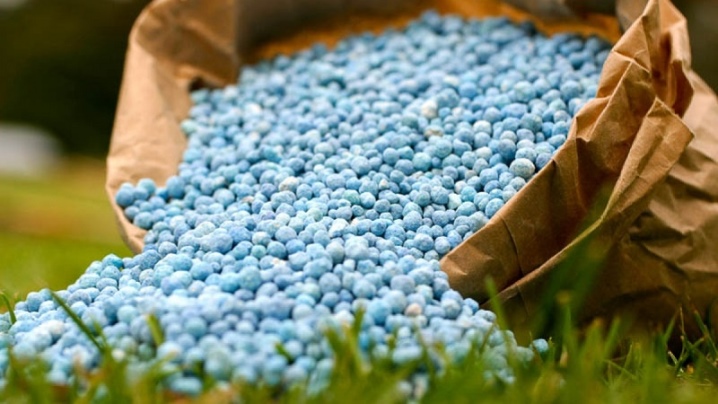
Soil mulching, loosening
After irrigation, the soil should be loosened without fail to avoid crust formation, as well as the growth of weeds. With the arrival of autumn, it is recommended to cover the soil around the vine with a layer of mulch. A suitable organic material for this will be humus, compost. The optimal layer thickness is 15 centimeters.
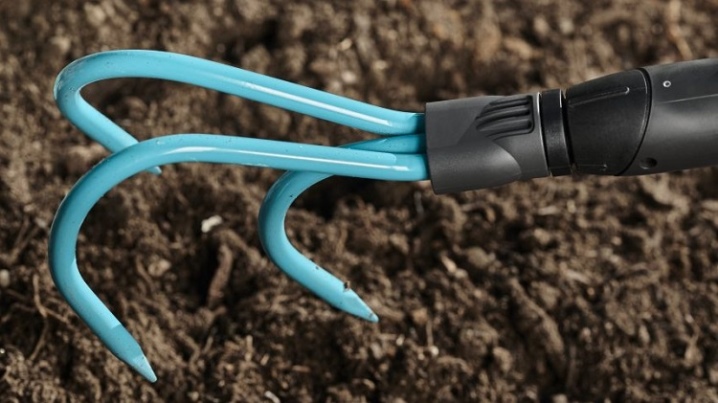
Sanitary pruning
In the first few seasons after rooting, the plant will spend all its energy on building up the root system, so flowering may be minimal or absent altogether. To help the crop throw away as many buds as possible, the gardener is advised to prune any flowers that have faded, which will help the plant save its energy. In the first year of the culture, it is recommended to leave only one, the most basic shoot in the fall, shortening its length by at least 20 centimeters. This work will help the side shoots grow and bloom better. Dry and old branches are also subject to removal.
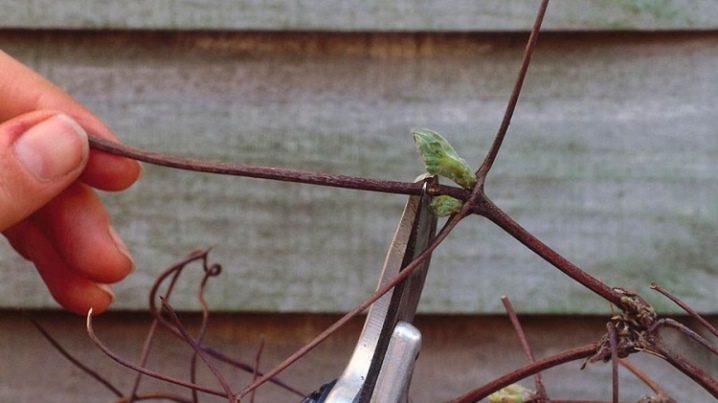
Shelter for the winter
The essence of preparing a plant for winter comes down to mulching the ground near the bush, as well as the obligatory treatment of the soil with fungicides. The layer of mulch must be sprinkled with ash. They cover clematis at a time when the soil is already freezing to -5 degrees. For these purposes, use wooden containers, roofing felt, burlap. With minimal snow cover, you can additionally make a shelter for the root system of the crop.
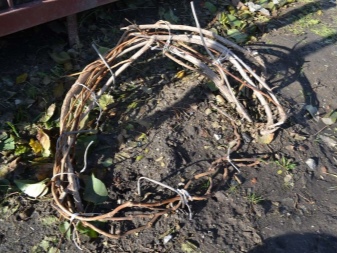
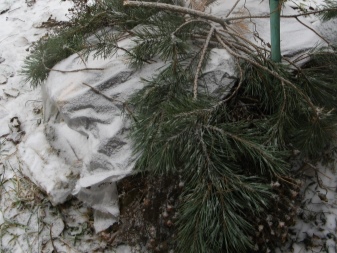
Trimming group
The "Ernest Markham" variety belongs to the 3rd pruning group, in light of which the buds of the plant are tied on new shoots, while the old ones are subject to the planned autumn pruning to 2, maximum 3 buds. As a rule, with the arrival of winter, the length of the aboveground part of clematis will be about 15 centimeters. Some gardeners prefer to prune shoots through one - this option will contribute to rejuvenation, as well as a harmonious arrangement of buds.
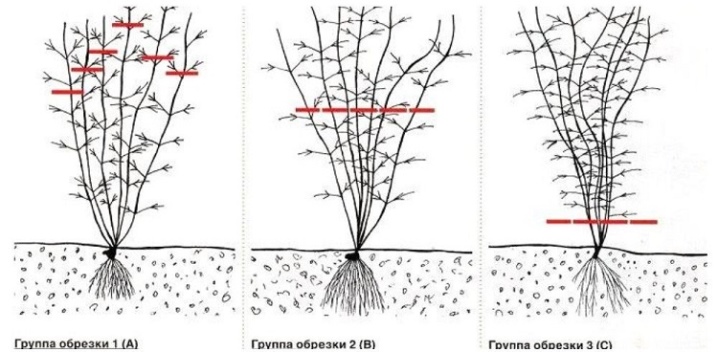
Reproduction methods
Clematis will succeed multiply in several options:
- cuttings;
- by layering method;
- by dividing the mother plant.
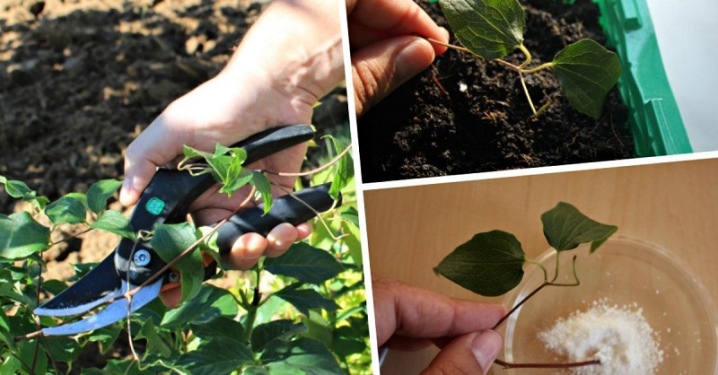
The first option makes it possible to get several young crops at the same time. The optimal period for collecting planting material will be the summer flowering phase. It is worth choosing shoots for cuttings only from healthy parts of the plant. It is necessary to cut off the planting material with a disinfected knife or pruner. A suitable shoot length will be 7-10 centimeters. In this case, the upper layer should be cut straight, and the lower part at an angle of 45 degrees. The green mass at the bottom must be cut off.
The collected material is placed in a solution with a growth stimulator, and then rooted in a small container with a prepared substrate, deepening the maximum to the first bud. River disinfected sand should be used as the top layer in the container. In the summer, cuttings can be planted directly in the garden, covered with a light film. Follow-up care consists of spraying and watering young plants. It will be possible to plant clematis in a permanent place in 2 months.
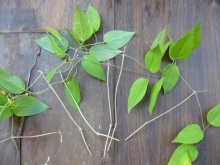

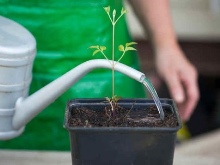
The method of layering will turn out to be less laborious in terms of implementation, since it comes down to the selection of several healthy shoots from the lateral parts of the mother culture, which in the future must be deepened into specially made grooves by digging in with earth. You can use staples or wire to fix the layering. Shoot care is reduced to watering and loosening. When the first shoots with buds appear, the layers can be separated and transplanted to a permanent place in the garden.
By dividing the bush, it will be possible to propagate only an adult liana, which will be more than 5 years old. TSuch events are held in the spring. To divide the culture, it must be dug out of the ground, the roots must be freed from excess soil, and then divided into several parts with a shovel or knife. In this case, the places of the cuts must be treated with wood ash, then all plants must be rooted in prepared areas in the open ground.
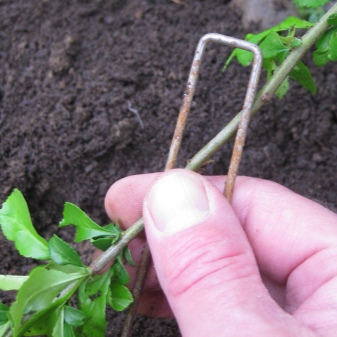
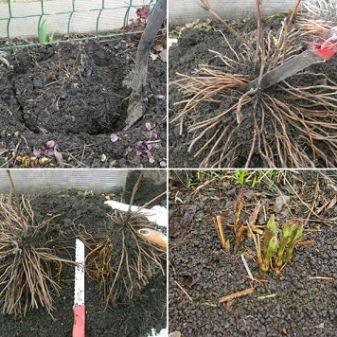
Diseases and pests
Clematis rarely suffers from any ailments, but is periodically affected by various types of rot. The cause of their occurrence will be errors related to agricultural technology, in particular, excessive watering or improper shelter for the winter. For the treatment of clematis, it is recommended to transplant, remove infected areas, normalize all the nuances of care.
As for insect pests, nematodes, thrips and ticks will be dangerous for the flower.It is almost impossible to get rid of the first; insecticides are used to combat the rest of the pest.
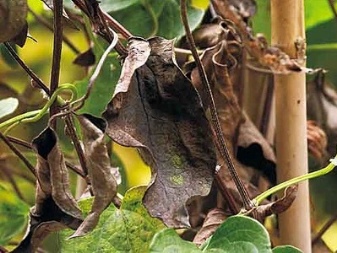
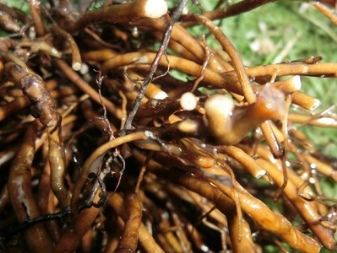
Review overview
Clematis of the Ernest Markham variety is characterized as a culture that can be successfully cultivated even by a novice gardener. Despite its exotic appearance, this flower grows well in the middle lane, and with proper agricultural technology, it can grow in regions with a harsh climate in winter.
Examples in landscape design
- Due to the fact that the liana of the Ernest Markham variety can grow to a significant size, using several plants, it will be possible to form a beautiful and blooming hedge or arch on the site.
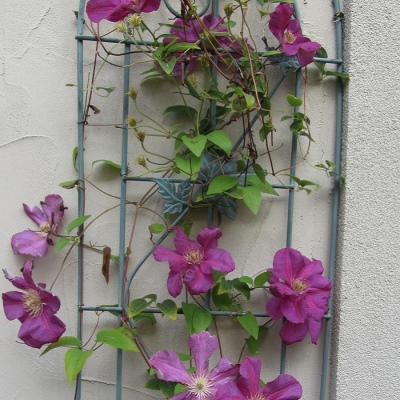
- Clematis in the form of a bush will also look attractive and dignified, becoming a real decoration of the garden.
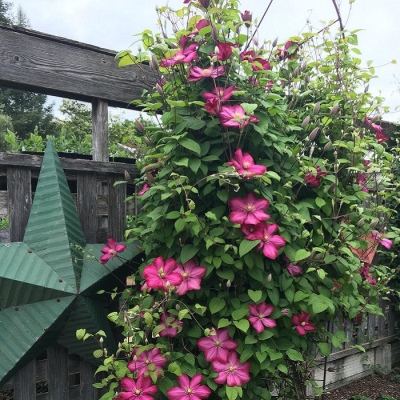
- "Ernest Markham" can be used in a flower bed not only as an independent plant, but also as a flowering composition.
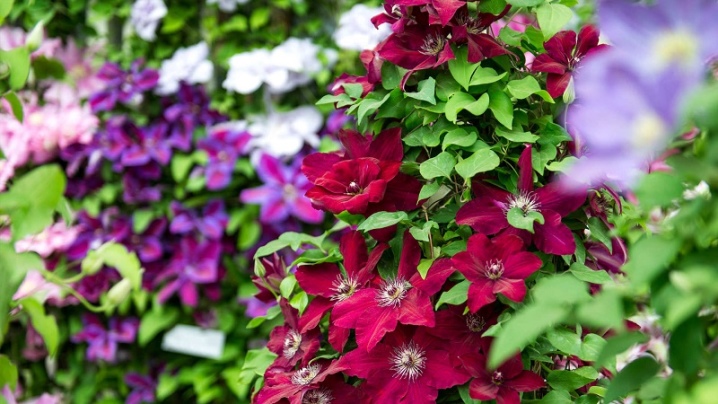
In the next video, you will find more information about the Ernest Markham clematis variety.







































































































The comment was sent successfully.